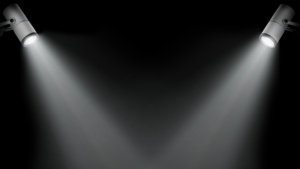
Do you have a clear vision of yourself and how you show up? I did for a long time. In the last few years, that self-image has gotten a little blurry.
I’m not 100% sure when it happened. What matters is that once I saw the misalignment, I couldn’t unsee it.
How do we know if the image we have of ourselves is aligned to how we are showing up? We look in the mirror.
The mirror
In spite of what we might believe about our identity, it is not fixed. It is malleable and changes over time. We absorb experiences, knowledge, and relationships. They all influence our identity, so that we grow and shift over time.
Sometimes those shifts have a positive influence. Other times, not so much. Negative experiences, such as living through trauma or working in a toxic environment, can shift us in a way we might not intend.
Ideally, we can all look in the mirror and see ourselves fairly, accurately, and with grace.
However, sometimes, we need help. We need someone else to hold up a mirror.
I came from a toxic environment on several fronts. For more years than I care to consider, there was toxicity at home and at work. I didn’t realize how much I was carrying. The negative framing I had developed about myself as a result.
Last spring, a friend and colleague held up a mirror. She called me out on the way I talked about myself. The negative self-talk was pretty extreme. I was putting ideas in people’s heads that might not have been there. But they were certainly in mine.
Her feedback was helpful. Once I realized, I was able to work on my self-talk and change the narrative.
However, the work wasn’t done. More recently, she helped me identify the next step. Now that I’m talking to and treating myself better, it’s time to hold others to the same standard.
Sacrificing our comfort for others’
Over the last few years, I’ve been part of an organization going through massive change. I’ve written previously about the forming and storming my peers and I went through. It’s part of every team’s journey, and not unexpected.
What’s been unexpected is my response to my peers when things get heated. When someone snaps at me or cuts me off abruptly, I shut down.
Shutting down is not healthy for me or my team. It does not align to my vision of myself as a leader who treats others, and is treated, with dignity and respect.
Because we agreed on team norms, I have been working on bringing up issues in the moment, which has been a struggle for me. Recently, I was feeling really good about my response to one such interaction, until my friend gave me her perspective.
As part of the response, I apologized for whatever I had done and carefully explained myself. While it smoothed over the situation and increased awareness for my peer, it was still not aligning to our team norms.
My friend pointed out a few things to me after the recounting.
- I was making myself small to make others comfortable
- I was defusing what felt like an unsafe situation at my own expense
- At no point did I hold my peer to the norms I was bending over backwards to adhere to
For those that have experienced long-term toxic environments, or any sort of trauma, safety feels paramount. We become groomed to smooth over strong emotions.
It took me a while to recognize what I was doing and why. Unlearning negative patterns requires recognition of safety first, and then reaffirming that we have value. It is only then that we can begin to relearn healthier patterns.
We train others how to treat us
We teach others how to talk to us and about us.
If we talk negatively about ourselves, it becomes others’ narrative, but the reverse is also true. If we allow others to talk negatively about us, it can quickly impact our sense of self.
By allowing others to talk to us in a way that is disrespectful, dismissive, or demeaning…we tell them it’s okay. We may even buy into the idea that it’s true and we deserve it. Negative talk feeds doubt, imposter syndrome, more negative self-talk, and mistreatment by others.
It may not feel safe, but each time we allow others to set the narrative, to talk negatively to us or about us, the bar is lowered. Our standard is lowered. Our perception of ourselves is lowered.
That self-image? It gets further away from who we are and how we want to see ourselves.
Moving back to a clear image
There are several ways to address challenging situations, helping us set and maintain a standard of treatment.
1. Decide how to retrain
We must each decide for ourselves how to best re-train others. Not everyone is comfortable being highly assertive, or wants to engage in ways that potentially risk relationships.
- Ask questions. Asking questions gives benefit of the doubt for the other party, and leaves room for misinterpretation.
- Reframe language. Restate negative language, such as “difficult” to “passionate.”
- Push back. Challenge egregious behavior or language.
2. Develop go-to responses
Once we decide on our approach, having go-to expressions, questions, or methods can make it easier to remember what to do and how to do it.
For example, if we are cut off in meetings, have an expression to bring the conversation back to our point. The most famous recent example is “I’m still talking.” It may be more direct than we feel comfortable with, but it will get the point across.
3. Practice
Maybe we practice at home, or in other situations outside the office. If we have a trusted mentor or coach, we can role play scenarios. Get comfortable being uncomfortable before trying at work.
4. Leverage a support network
Whether it’s telling our closest circle, or finding allies and advocates in the office, having a support network has two benefits. One is holding us accountable for the change and continuing to hold up the mirror. The other is having folks on the lookout who can encourage us on our journey.
5. Reflect and refine
As we practice and implement our strategies, we may need to make adjustments. We can become more confortable and confident, allowing us to take additional risk. Alternatively, our delivery could use a tweak. Internal check-ins, and ones with our support network, can help us in continuous improvement.
Lift the bar, and ourselves
The truest way to establishing higher standards for ourselves is the friend test. Would we let someone treat a friend this way? If the answer is no, then we shouldn’t allow it for ourselves. Even if we are that someone.
It may feel uncomfortable to take up space. To honor ourselves and our voice. Yet, if we don’t think highly of our abilities, contributions, and gifts…why would anyone else?
Let’s lift the bar, and set higher standards. It is only when we lift our standards that we lift ourselves.








